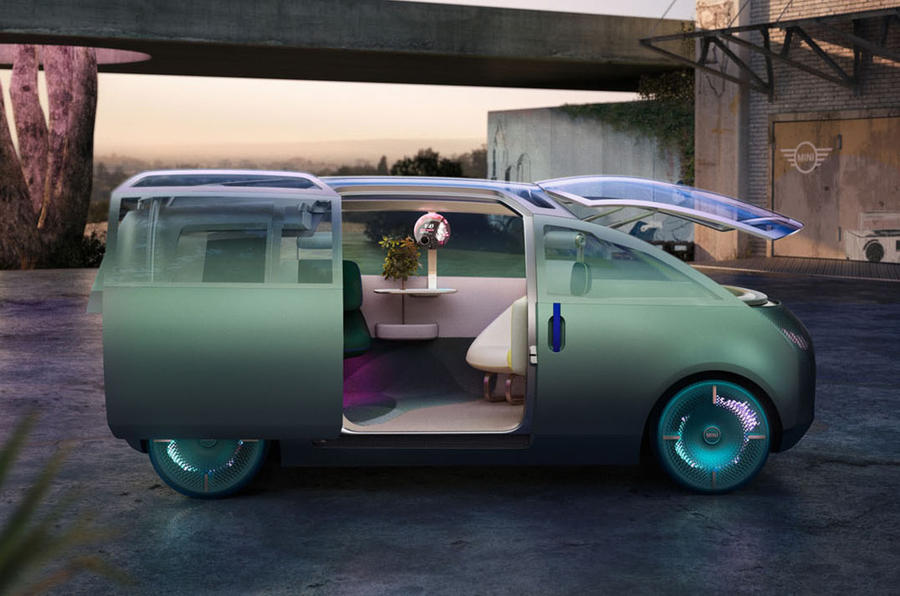
Mini Urbanaut Signals Future Models And Styling Features
As a concept the Mini Urbanaut is interesting, but as a signal of future models and styling features it is worth exploring more. We are past the days when what-if blue-sky concepts are built. If a manufacturer conceives something like the Urbanaut there is some sort of production intent behind it. In this case it signals a new segment Mini wants to enter while sharing some new design features.

Yes, it was built to “develop solutions for the future of urban mobility in 2030.” These design school-like projects have been around for ages, so that’s nothing new. Featuring the latest electric and autonomous technology is almost boring it has become so expected. But then we get to the meat of the project.
Mini is seriously considering the radical Urbanaut for the light-commercial segment

Mini is said to be seriously considering a radical new model for the light-commercial segment, but still a few years off. It would be much like this one-box design with a long wheelbase and short overhangs. Though somewhat like the ID Buzz that Volkswagen has been promising for, we don’t know, 23 years or so, it features more crowned surfaces. Rather than following the schizophrenic sculpting so popular now it goes with smooth surfaces without any defining feature lines.
The Urbanaut is only 175-inches in total length. It is far smaller than the ID Buzz at 193-inches. A five-seat passenger van and commercial version are both being developed. Mini and parent company BMW currently have no van. German rivals Mercedes and Volkswagen have for decades-especially VW with the Microbus. So this would give BMW a van platform to develop if it so desired.
Urbanaut reveals design features planned for the new three-door hatchback in 2022

It also reveals design features planned for the new three-door hatchback due in 2022 as a 2023 model. This according to Mini head Bernd Körber to Autocar. That includes a new interpretation of the traditional Mini grille.
What will change in production are the addition of bumpers, conventional headlights, and a tire and wheel combo not so show car futuristic-looking. They’re fun but hardly practical. Also, the articulating windshield serves no purpose so it’s doubtful it would make it to production. The “mobile living space” interior would give way to conventional seats that fold flat for storage or can be removed for hauling.
Some of the interior details will find their way into production Minis

Mini design head Oliver Heilmer told Autocar, “You will find some citations of design items and language, especially in the interior, that will be translated into series production cars in the next model generation.” Translated, that means some of the interior details will find their way into production Minis.
This isn’t Mini’s first jump into van concepts. Back in 1997 it showed the Spiritual and Spiritual Too concepts that featured both two- and four-door versions. Looking somewhat like a Smart car they seemed very production-ready. However, neither made it into production. So in some ways Mini has always had aspirations of getting into this one-box van-like package. Maybe this decade it will finally prevail.



